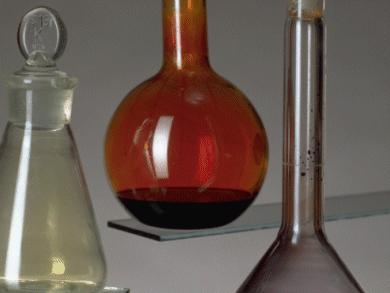By immobilizing purified haloalkane dehalogenase (EC 3.8.1.5) and a fluorescence pH indicator on a fiber-optic tip, researchers in Czech Republic have developed a new type of sensor for halogenated hydrocarbons. They tested the pH sensitivity of various fluorescent dyes and different immobilization conditions in order to optimize the sensor for as low a detection limit as possible.
They demonstrated proof of principle with two well-known organohalogen compounds, 1,2-dibromoethane and 3-chloro-2-(chloromethyl)-1-propene, with detection limits as low as 0.133 and 0.014 mM, respectively.
- Development of an enzymatic fiber-optic biosensor for detection of halogenated hydrocarbons
S. Bidmanova, R. Chaloupkova, J. Damborsky, Z. Prokop,
Anal. Bioanal. Chem. 2010.
DOI: 10.1007/s00216-010-4083-z




